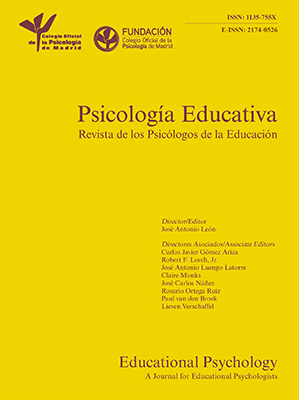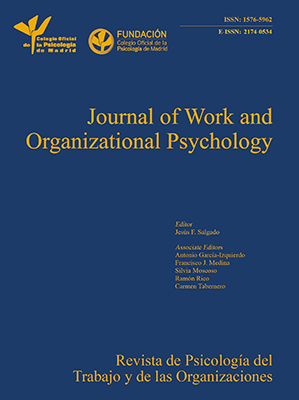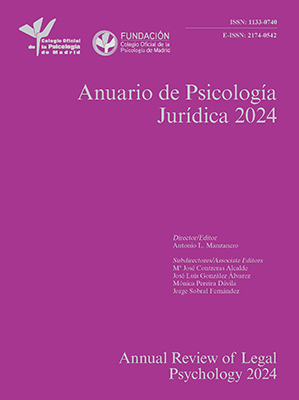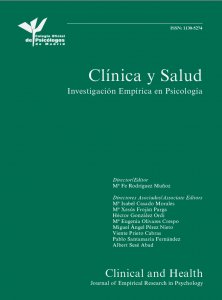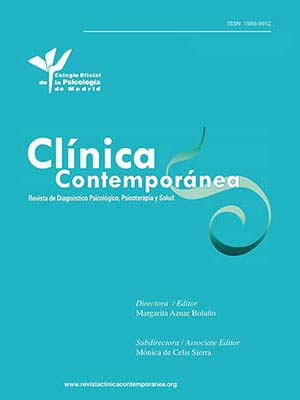
Effectiveness of Motivational Interviewing with Justice-involved People: A Systematic Review and Meta-analysis
Teresa Pinto e Silva1, Cláudia Gouveia1, Faraj A. Santirso2, Olga Cunha1, and Sónia Caridade1
1Psychology Research Centre (CIPsi), University of Minho, Braga, Portugal; 2University of Valencia, Spain
https://doi.org/10.5093/pi2025a8
Received 2 January 2025, Accepted 31 March 2025
Abstract
Objective: Motivational interviewing (MI) is increasingly recognized as an effective approach in forensic settings, particularly for overcoming resistance by avoiding confrontation and fostering intrinsic motivation. Research shows that interventions incorporating MI are more effective than other approaches in preventing and reducing offending behavior, highlighting its importance in improving intervention outcomes. Given this evidence, advocating for the integration of MI is crucial to enhance the effectiveness of interventions. Method: This systematic review and meta-analysis aimed to systematize knowledge and assess the effectiveness of interventions incorporating MI for justice-involved people who have been sentenced to custodial or non-custodial measures. Twenty-two studies were included. The total sample size of the studies ranged from 25 to 528 individuals convicted of various offences, including intimate partner violence, violent crimes, sexual offences, property crimes, driving offences, and drug offences. Results: Results indicated that MI is more effective in increasing session attendance and reducing dropout than interventions without MI. For official recidivism, evidence favored MI with a statistically significant reduction in recidivism rates. Conclusions: These findings highlight the importance of integrating MI into forensic settings, establishing its positive impact on numerous outcomes.
Keywords
Motivational interviewing, Justice-involved people, Intervention programs, Systematic review, Meta-analysisCite this article as: Pinto e Silva, T., Gouveia, C., Santirso, F. A., Cunha, O., and Caridade, S. (2025). Effectiveness of Motivational Interviewing with Justice-involved People: A Systematic Review and Meta-analysis. Psychosocial Intervention, 34(2), 89 - 102. https://doi.org/10.5093/pi2025a8
Correspondence: id11246@alunos.uminho.pt (T. Pinto e Silva).The need for psychological intervention for justice-involved people is becoming increasingly urgent (Gonçalves et al., 2020). Andrews et al. (1990) introduced three general principles for effective correctional treatment: the risk, needs, and responsivity (RNR) principles. The RNR model of correctional assessment and treatment is rooted in general personality and cognitive social learning theories, incorporating criminal behavior and the key risk, need, and responsivity factors involved in crime prevention (Andrews & Bonta, 2006; Bonta & Andrews, 2016). This model emphasizes that i) interventions should target an individual’s risk of reoffending, ii) therapists should assess and prioritize the individual’s criminogenic needs in their interventions, and iii) interventions should be tailored to the individual’s learning style, strengths, abilities, and intrinsic motivation to foster positive behavioral change (Stinson & Clark, 2017). In this sense, it is important not to overlook the importance of motivational work (Gonçalves et al., 2020). Motivation for change is fundamental, and motivational interviewing (MI) has proven to be an innovative and effective approach when working with forensic populations, helping clients explore and resolve their ambivalence towards change (Gonçalves et al., 2020). When working with justice-involved people, it is important to first increase their engagement in the process of change (Polaschek & Wong, 2020). In this context, developing intervention programs that address the individual’s needs, characteristics, and risk level is fundamental (Gonçalves et al., 2020). In addition, various aspects should be considered, such as (i) the fact that the intervention is usually provided through a court order as an alternative to imprisonment and (ii) the context of the intervention itself (Gonçalves et al., 2020). Justice-involved people often approach intervention assessment with a lack of motivation to change and display argumentative behavior, impulsivity, and skepticism (Polaschek & Wong, 2020), and all these factors can increase resistance to intervention and undermine its success (Gonçalves et al., 2020). Consequently, intervention programs for these individuals must consider that the treatment process will be challenging and interventions must reflect all these challenges (Polaschek & Wong, 2020). For this reason, it is essential to adopt a motivational approach when working with justice-involved people in order to elicit changes in behavior and attitudes (Gonçalves et al., 2020). Motivational Interviewing with Justice-involved People Intervention programs with justice-involved people tend to be highly structured and directive, which tends to increase resistance, and those with low motivation to change are less likely to benefit from this type of programs (Miller & Rollnick, 2002). MI appears to be an effective tool for managing this resistance by avoiding confrontation and promoting opportunities to enhance participants’ intrinsic motivation (Miller & Rollnick, 2016). MI is a collaborative communication approach designed to strengthen an individual’s motivation and commitment to a specific goal, stimulating and exploring the individual’s reasons for change in a climate of acceptance and compassion (Miller & Rollnick, 2016). MI enables the activation of an individual’s motivations and resources for change. Through high-quality reflective listening and a comprehensive communication style, it will be possible to promote a greater incidence of change talk – an individual’s own statements in favor of change – and unlock this ambivalence, develop commitment to change, and increase intrinsic motivation (Clark, 2019; Miller & Rollnick, 2016), which will be key aspects to integrate into an intervention program. The main objectives in using MI in forensic practice are to promote engagement in the supervision process and to elicit and explore an individual’s own motivations for change regarding relevant criminal risk factors and life areas (Tafrate et al., 2019). Intervention programs incorporating MI have been found to be more effective than other types of intervention in preventing and reducing the criminal conduct of justice-involved people (McMurran, 2009; Pinto e Silva et al., 2022; Santirso, Gilchrist, et al., 2020). Wong et al. (2007) suggested the integration of MI in intervention programs and showed an increase in motivation for change and a reduction in the risk of recidivism among more resistant people. Different studies have investigated the effectiveness of MI with justice-involved people. However, research has tended to focus on only one specific type of crime (e.g., intimate partner violence [IPV]), on a specific problematic (e.g., substance abuse), or on predominantly male samples. For example, Feldstein and Ginsburg (2006) reviewed the use of MI with juvenile justice populations, both male and female. They found that MI was effective in reducing substance use and increasing feelings of self-efficacy and emphasized the importance of using MI during the educational moment of entry into the juvenile justice system. A broader review of MI by McMurran (2009) analyzed its impact on various justice-involved populations. The review included 19 studies and found that while MI was most frequently used with substance abuse offenders, it was also applied to IPV perpetrators, drink-driving offenders, and general offenders. Regarding gender, only one study in the review included both male and female justice-involved people in its sample. Regarding retention in treatment, results looked promising for substance abuse populations, though perhaps not for IPV perpetrators. In terms of behavior change, the effects of MI are ambiguous. There is mixed evidence for reductions in substance use, with both positive and negative outcomes. Additionally, there is also mixed evidence for reductions in offending, with positive effects on general offending, mixed results for drink-driving, and no effect on IPV. No distinctions were made with regard to gender. A review by Soleymani et al. (2018) analyzed the efficacy of MI as a pre-treatment intervention to promote commitment to treatment for men referred to attend IPV program. Results revealed a significant improvement among participants in engagement, session attendance, and homework compliance following MI. Santirso, Gilchrist, et al. (2020) and Pinto e Silva et al. (2022) evaluated the effectiveness of interventions that include MI for IPV male perpetrators. Santirso, Gilchrist, et al. found that IPV interventions that incorporated MI were significantly more effective in increasing the intervention dose and reducing dropout than interventions without MI. Additionally, for physical and psychological IPV and official recidivism, evidence favored interventions with MI, although not significantly. Pinto e Silva et al. found that MI had an influence on increasing attendance rates, treatment adherence, motivation for change, and other behavioral and attitudinal outcomes. Specifically, MI showed greater effectiveness among men with low readiness to change and in the early stages of change. Considering this, the present systematic review and meta-analysis aims to systematize knowledge and assess the effectiveness of interventions incorporating MI for justice-involved people sentenced to either custodial or non-custodial measures. It seeks to include both men and women, encompass various types of offences rather than focusing on a single category, and consider people serving both custodial and non-custodial sentences. These inclusions are intended to ensure that this systematic review and meta-analysis is as broad and comprehensive as possible, providing a deeper understanding of the effectiveness of MI in forensic contexts. This systematic review and meta-analysis was conducted according to the Preferred Reporting Items for Systematic Reviews and Meta-Analyses (PRISMA) guidelines (Page et al., 2021) and was previously registered on the Open Science Framework [blind for review purposes]. Eligibility Criteria The following criteria were used to determine whether studies were eligible for inclusion: (i) men and women over 18 years old convicted for a crime, complying with custodial or non-custodial measures, (ii) address the application and/or evaluation of MI with individuals convicted of different types of crime, and (iii) peer-reviewed original research articles. Only studies written in English, Spanish, and Portuguese were included. Studies representing grey literature, comments, reviews, conference articles, academic papers, books, and chapters of books were excluded. Search Strategies The literature search was conducted in January 2024 and updated in December 2024 in four databases (PubMed, Science Direct, PsycInfo, and Cochrane) using the following search strategy, which was adapted to each database’s specificities: (effectiveness OR efficacy) AND (motivational interviewing OR motivational strategies OR motivation*) AND (convicted OR custodial measures OR custodial settings OR prison) AND (community measures OR under probation OR probationer) AND (offend* OR agress* OR batterer OR perpetrator*) AND forens*. In addition, the reference lists of various reviews and meta-analyses were consulted. Literature Selection Process and Data Extraction Reference data were retrieved and exported to the Rayyan Management Software (Ouzzani et al., 2016). Duplicates were eliminated. Titles and abstracts were then screened by two coders (TS and CG) to determine if the articles met the inclusion criteria. Those that met the inclusion criteria were retrieved and fully read to reach a final decision (Figure 1). A codebook was developed to extract data from all the included manuscripts, including the following key characteristics: reference information, study characteristics, sample characteristics, design characteristics, intervention characteristics, and intervention results. All articles were independently coded by TS and CG, with a third reviewer (OC or SC) verifying all data. Discrepancies between coders were resolved through discussion with the third reviewer. Methodological Quality Assessment The Mixed Methods Appraisal Tool (MMAT; Hong et al., 2018) was used to assess the methodological quality of all studies included. This tool proved essential to limit the bias in synthesizing evidence. Five items are considered to assess the methodological quality of studies, depending on their quantitative design (e.g., randomized controlled trials, non-randomized trials). A detailed analysis of each criterion classification was conducted to identify the study’s weaknesses and inform the discussion on coder agreement. Two authors (TS and CG) independently assessed the studies’ methodological quality. Disagreements were resolved through discussion with another author. Statistical Analysis Standardized mean differences (SMD) for continuous outcomes and odds ratios (OR) for dichotomous outcomes were employed as the primary summary measures in this meta-analysis. The 95% confidence intervals (CIs) for each study included were calculated. A random-effects model was adopted to manage the expected heterogeneity among the studies, with heterogeneity assessed using the I² statistic as outlined by Higgins et al. (2003), where values of 25%, 50%, and 75% indicate low, moderate, and high heterogeneity, respectively. This model choice reflects the diversity in study outcomes and methodologies. Preference was given to data analyzed on an intention-to-treat (ITT) basis, aligning with recommendations for preserving the random assignment and maintaining external validity in meta-analysis (Ahn & Kang et al., 2023; Bai et al., 2021). The ITT approach mitigates bias by including all participants as originally allocated, thus providing a more realistic measure of intervention effectiveness. When studies reported multiple follow-up periods, data from the longest follow-up were selected to comprehensively assess any enduring effects of the interventions (Cuzick, 2023). Meta-analyses were carried out using the Metafor package (Viechtbauer, 2010) within the R software environment (R Core Team, 2021). Screening and Study Selection Our electronic database search yielded 628 references, 234 out of them were duplicates and consequently removed. Thus, 394 titles were screened to assess eligibility and 366 were excluded because they were unrelated to the topic. Then, 28 articles were analyzed. Of those, six were excluded because they did not meet the eligibility criteria. The main reasons for exclusion were: (i) the sample did not meet the inclusion criteria (e.g., Tafrate et al., 2023), (ii) the studies were review articles (e.g., Santirso, Gilchrist, et al., 2020), and (iii) the outcomes of interest were not assessed (e.g., Cowell, et al., 2018). As a result, 22 manuscripts were included in the systematic review and meta-analysis and marked with an “*” in the references’ section. The main results are displayed in Table 1 (Qualitative Assessment), Table 2 (Characteristics of the studies [k = 22] included in the Systematic Review), and Table 3 (Main Results of the Studies [k = 22] included in the Systematic Review). Table 2 Characteristics of the Studies (k = 22) Included in the Systematic Review   Note. ES = English-speaking; SS = Spanish-speaking; IPV = intimate partner violence; DC = diverse crimes; CAD = crimes related to alcohol and drugs use; DWI = driving while intoxicated. Quality Assessment Of the twenty-two studies included, three met all the criteria of excellent, eleven presented four out of five criteria, three showed three out of five criteria, two showed two out of five criteria and one showed one out of five criteria. Results are presented in Table 1. Qualitative Analysis Of the included articles, most were designed as Randomized Controlled Trials (RCT; k = 17) with only five studies using a different design: quasi-experimental studies (k = 2), a non-randomized controlled trial (k = 1), and a pilot study (k = 1). The publication years of the articles ranged from 2000 to 2024. The highest number of publications occurred in 2013 and 2016, with three studies each, followed by 2020, 2019, 2018, 2011, and 2008, each with two studies. The majority of the studies were conducted in the United States of America (USA; k = 11). Six studies were carried out in Europe, mostly in Spain (k = 3). The other three European studies were conducted in the Netherlands (k = 2) and in Portugal (k = 1). Additionally, two studies were conducted in New Zealand and three in Canada. Seventeen studies were delivered with people in probation and five with people in prison. The total sample size of the studies ranged between 25 and 528 individuals. Regarding treatment condition, the sample size for the treatment group ranged between 15 and 247, and for the control group between 10 and 281. Regarding the gender of the participants, most of the studies were conducted on men (k = 19), with only three of them being conducted on both men and women. No studies conducted only with women were found. Most of the studies included participants who had been convicted of IPV (k = 14). Five studies included individuals convicted of drug-related offences. Two studies included various types of crimes, such as violence, sexual, property, drug, and driving offences, and one study included participants convicted for driving while intoxicated (DWI). Studies used MI to assess its effectiveness in a variety of ways: i) in increasing intervention’s efficacy (k = 6), ii) in increasing treatment initiation and compliance (k = 6), iii) in reducing recidivism (k = 3), and iv) regarding its impact on other outcomes such as substance use (k = 4), empathy (k = 1), working alliance (k = 1), global functioning (k = 1), and violence perpetration (k = 2). Regarding the type of MI intervention used, 12 studies conducted interventions that focused on MI as described by Miller and Rollnick (2023), one of which was delivered online. Besides the usual MI intervention, three different types of motivational intervention were identified, such as: i) the Individualized Motivational Plan (IMP; k = 3), ii) motivation enhancing interventions (k = 6), with one of them being a briefer intervention, and iii) the Brief Alcohol Intervention (BAI). IMP includes a set of motivational strategies to increase treatment compliance and motivation for change and is based on MI, the stages of change approach, solution-focused brief therapy, the good lives model, and therapeutic alliance (Lila et al., 2018). Motivation enhancing interventions are based on the principles of MI and include personalized assessment feedback on the treatment target (Murphy et al., 2018; Scott et al., 2011). BAI relies on MI techniques to minimize resistance and includes building rapport, expressing empathy, and personalized feedback regarding alcohol use and IPV (Stuart et al., 2013). The majority of the MI interventions were conducted individually (k = 16). Two studies conducted their interventions in a group format and three conducted in both formats (individual and group). The duration of the MI individual interventions ranged between one and 26 sessions. Each session lasted 15 to 90 minutes. In addition to the MI intervention, 13 studies included a complementary intervention. Five of them added a cognitive-behavioral intervention and two added a psychoeducational intervention. Two studies added either a cognitive-behavioral or psychoeducational intervention and one added a Duluth style intervention. The other three studies did not specify the type of intervention added. In terms of length of follow-up, it was more common to conduct a single follow-up session (k = 10), at six (k = 3) and 12 months (k = 2); or two or more follow-up sessions (k = 5): i) at two and six months and six and 12 months, ii) at three, six, and 12 months, and iii) at three, six, nine, and 12 months. Treatment Compliance and Initiation Regarding treatment compliance and initiation, there were little differences between applying a MI intervention alone or complementing it with other interventions as both conditions showed that MI was successful in improving participants’ compliance with treatment. For MI intervention alone, Lerch et al. (2017) found that the odds of initiating treatment for those assigned to the treatment condition were 65% higher than those assigned to the control condition. Shaul et al. (2016) found that the treatment group completed 4.8 steps out of seven of their intervention and Crane and Eckhardt (2013) found that 82.6% of the treatment group were more likely to be compliant with treatment, relative to the control group (41.2%). For MI complemented with other intervention, Cunha, Pedrosa, et al. (2024), Lila et al. (2018), Scott et al. (2011), and Soleymani et al. (2022) found that the treatment group attended more sessions compared to the control group. Specifically, Scott et al. (2011) found that treatment completion rates for resistant clients attending MI intervention were higher than those of both the resistant clients in standard intervention and for non-resistant clients. In addition, Musser et al. (2008) found that MI sessions significantly enhanced treatment engagement and help-seeking behavior. Dropout Rates Regarding treatment dropout, Crane and Eckhardt (2013) reported that 72.9% of the treatment group remained in good standing six months post-adjudication compared to 50% in the control group, revealing the positive effects of MI. Also, Scott et al. (2011) found that resistant participants in the treatment condition were less likely to dropout than those in the control condition. On the other hand, Lila et al. (2018) found no significant effect of MI on reducing dropout rates, with 20% of the treatment group dropping out compared to 26.25% in the control group. Similarly, Cunha, Pedrosa, et al. (2024) reported high dropout rates in both groups. Impact on Substance Use Substance use was one of the most studied dimensions and various results regarding MI’s effectiveness were found. Murphy et al. (2019) found MI to be beneficial in increasing participant’s recognition of alcohol problems, while Stuart et al. (2013) observed general improvements in alcohol outcomes for the treatment group. Regarding substance abstinence, both Owens and McCrady (2016) and Polcin et al. (2018) reported significant increases in substance abstinence among MI groups compared to the controls. Notably, Polcin et al. (2018) found higher abstinence rates in women at 12-month follow-up compared to the control group. However, regarding substance use treatment, Shaul et al. (2020) found minimal differences between conditions, with 46.8% of the treatment group and 47.7% of the control group remaining in substance abuse treatment for at least 90 days. Considering participants’ motivation to change their substance use, Easton et al. (2000) reported that participants showed increased motivation to take steps toward change at post sessions. Recidivism Rates Regarding recidivism, studies have found that MI has an impact on reducing recidivism in both conditions. Polcin et al. (2018) applied MI as a stand-alone intervention and found that at six-months follow-up participants in the treatment condition evidenced a lower number of arrests and convictions compared to those in the control condition. Both Anstiss et al. (2011) and Lila et al. (2018) employed MI alongside a complementary intervention. Anstiss et al. (2011) found that 57% of the treatment group were reconvicted and 24% were re-imprisoned, compared to 78% reconvicted and 41% re-imprisoned in the control group. Lila et al. (2018) found no differences between the treatment group and the control group, although the treatment group had 1.36 times lower risk of recidivism than the control group. Change Outcomes In terms of change outcomes, Owens and McCrady (2016) found that after MI the treatment group reduced the proportion of drug users in their social networks from pre- to post-incarceration. Additionally, Anstiss et al. (2011), Cunha, Pedrosa, et al. (2024), Lila et al. (2018), and Kistenmacher and Weiss (2008) found that the participants in the treatment condition concluded the intervention at more advanced stages of change, compared to those in the control condition. More specifically, Anstiss et al. (2011) found that the mean motivation of MI participants increased from 1.4 (SD = 0.50) to 2.4 (SD = 1.1), whereas the control group’s mean motivation was more stable, with a pre-treatment score of 1.15 (SD = 0.53) and a post-treatment score of 1.4 (SD = 0.55). Similar results were found by Lila et al. (2018), with the mean motivation of MI participants increasing from 1.11 (SD = 0.32) to 2.86 (SD = 1.46), and that of the control group increasing slightly from 1.16 (SD = 0.40) to 1.99 (SD = 1.13). Regarding readiness to change, there were distinct findings. While Alexander et al. (2010) and Cunha, Pedrosa, et al. (2024) found that participants with lower readiness to change benefited more from the MI intervention, found that MI sessions did not significantly alter self-reports of readiness to change. Other Outcomes Other outcomes were identified, both in MI intervention alone and in MI with a complementary intervention. Regarding MI intervention alone, Alexander et al. (2010) observed that at follow-up physical violence reports by the victim significantly decreased among participants in the treatment condition as opposed to the participants in the control condition. However, there were no differences regarding reports of psychological violence. Kistenmacher and Weiss (2008) found that participants who received the MI intervention were able to take more responsibility for their behavior than those who did not receive MI. Regarding MI complemented with other intervention, Cunha, Pedrosa, et al. (2024), Lila et al. (2018), and Stuart et al. (2013) found a positive influence of MI regarding violence perpetration, with the treatment being effective in reducing the likelihood of perpetration of both global violence and physical and psychological violence. Regarding IPV risk, Cunha, Pedrosa, et al. (2024) found that both groups showed significant reductions at post-treatment, with larger effect sizes for the treatment group. Romero-Martínez et al. (2019) observed that the treatment group demonstrated enhanced accuracy in decoding emotional facial signals and improved perspective-taking abilities following the intervention. Musser et al. (2008) and Santirso, Lila, et al. (2020) observed that participants in the treatment condition revealed a stronger working alliance than participants in the control condition. Additionally, Santirso, Lila, et al. found that, regarding protherapeutic behaviors, participants in the treatment condition exhibited greater responsibility for abuse, a higher overall working alliance, and higher scores in agreement and bond. Swogger et al. (2016) observed that the treatment was effective in minimizing resistance and in eliciting ideas about change among participants with low affective traits of psychopathy and sufficient emotional range. Stein and Lebeau-Craven (2002) found that the MI intervention improved the participants’ ability of identifying triggers to relapse as well as aspects of their lives that may assist in preventing relapse. Zalmanowitz et al. (2013) observed that participants in the later stages of change (specifically, preparation, and action) scored significantly higher on the global functioning instrument (OQ), while individuals in the earlier stages of change (precontemplation and contemplation) scored significantly lower. Meta-analysis The main outcomes analyzed in the meta-analysis were session attendance, dropout, and recidivism. The rest of the outcomes could not be analyzed due to the great variability in the measures used in the reviewed studies. Results for the outcomes analyzed are shown in Figures 2-7. Session Attendance Four trials, comprising 527 participants (Crane & Eckhardt, 2013; Lila et al., 2018; Murphy et al., 2018; Musser et al., 2008), were included in the meta-analysis to examine session attendance as the primary outcome. Participants in interventions incorporating MI demonstrated significantly higher session attendance compared to those in interventions without MI (SMD = .22, 95% CI [.05, .39], p = .012) (Figure 2). Heterogeneity was negligible (I² = 0%), indicating consistency across studies. The funnel plot (Figure 3) appeared symmetrical, suggesting no significant evidence of publication bias. Dropout Rates Five trials, comprising 713 participants (Crane & Eckhardt, 2013; Lila et al., 2018; Murphy et al., 2018; Shaul et al., 2020; Soleymani et al., 2022), were included in the meta-analysis to examine dropout rates. Participants in interventions incorporating MI showed a trend toward lower dropout rates compared to those in interventions without MI (OR = -0.34, 95% CI [-0.74, 0.05], p = .08) (Figure 4). Heterogeneity was low (I² = 17.29%), indicating moderate consistency across studies. The funnel plot (Figure 5) showed a symmetrical distribution, suggesting no significant evidence of publication bias. Official Recidivism Six trials, comprising 1159 participants (Anstiss et al., 2011; Crane & Eckhardt, 2013; Lila et al., 2018; Polcin et al., 2018; Shaul et al., 2016; Stuart et al., 2013), were included in the meta-analysis with official recidivism as outcome. Among participants in interventions that incorporated MI, 138 out of 569 (24.3%) were rearrested at follow-up, compared to 168 out of 590 (28.5%) in interventions without MI. Evidence favored MIs, with a statistically significant reduction in recidivism rates (OR = -0.30, 95% CI [-0.59, -0.02], p = .039) (Figure 6). Heterogeneity was negligible (I² = 0%), indicating consistent results across studies. The funnel plot (Figure 7) was symmetrical, suggesting no significant evidence of publication bias. A systematic review and meta-analysis was conducted in order to systematize knowledge and assess the effectiveness of interventions incorporating MI for justice-involved people and have been sentenced to custodial or non-custodial measures. Data from 22 manuscripts were included in this study. The majority of the studies were conducted in the United States of America, followed by Europe (Spain, the Netherlands, and Portugal), New Zealand, and Canada. Despite the high prevalence of research in the USA, there is a growing interest from other countries in studying MI and its effectiveness in the forensic context. However, this review was limited to English, Portuguese, and Spanish manuscripts, and research from other countries may be missing. As previous studies have documented (e.g., Cunha, Pedrosa, et al., 2024); this finding highlights the urgency of conducting research in other countries other than the USA to explore possible cultural differences and to better understand the generalizability and applicability of interventions across diverse sociocultural contexts. The present study aimed to examine the use of MI with individuals who committed various types of crimes rather than focusing on a single category. However, most of the included studies involved individuals convicted of IPV, followed by those convicted of drug-related offences and other types of crimes (e.g., violence, sexual, property, drug, and driving offences). Literature has been pointing to high rates of IPV perpetration (World Health Organization [WHO, 2024]) and recidivism worldwide (Petersson & Strand, 2017). Considering this, these results are not surprising, as this crime is a major worldwide problem, and it is essential to prevent its occurrence. There are many attributions and cognitive distortions that significantly influence perpetrators’ motivation and risk of reoffending, recidivism and dropout (Cunha et al., 2022). Individuals who do not take responsibility for their abusive behavior are less motivated to change and have a higher risk of dropping out of the intervention (Santirso, Gilchrist, et al., 2020), which is a risk factor for IPV reoffending (Lila et al., 2019). In this sense, MI has been found to be effective in significantly reducing the likelihood of dropout among these perpetrators (Cunha, Pedrosa, et al., 2024). Additionally, these individuals are the most frequent receivers of motivational interventions, particularly those who are court-mandated to participate in such programs (e.g., Babcock et al., 2016; Roldán-Pardo et al., 2023). This is connected to the dual need to address their behavioral patterns while ensuring compliance with change and judicial requirements for rehabilitation. MI has been extensively studied among IPV perpetrators, and findings from this systematic review and meta-analysis further support its effectiveness. The present review found that interventions incorporating MI led to significantly higher session attendance, lower dropout rates, and reduced recidivism rates among IPV perpetrators compared to interventions without MI. These findings align with previous research on the effectiveness of MI in this population (e.g., Pinto e Silva et al., 2022; Santirso, Gilchrist, et al., 2020; Soleymani et al., 2018). However, this review aimed to address different types of crime, which was not entirely possible given the large amount of research found that focused on IPV. In this sense, future research should focus on understanding the impact of MI on other crimes, in order to increase knowledge on this issue. One of the requirements for this review was to include both women and men. However, the majority of studies included only men in their sample, with only three studies also including women. Despite this inclusion, men still outnumbered women as the proportion of men and women in the sample was not equal, making it difficult to analyze possible gender differences. For example, the study by Polcin et al. (2018) included 74.2% men and 25.8% women, and the study by Swogger et al. (2016) included 64.8% men and 35.2% women. It is possible to observe a continued focus on studying men, while women are overlooked, as no study was found that included only women. This is a persistent finding, as literature has already pointed out the lack of studies that include women (e.g., Pinheiro et al., 2022). This highlights the urgent need for more research focusing exclusively on women and for interventions aimed directly at women, given the increasing conviction rates and the specificity of female criminal conduct, avoiding abusive generalizations of studies conducted with men. A study by Castro Rodrigues et al. (2023) found that women tend to be doubly punished, not only for their crimes, but also for the judge’s assessment of the specific reprehensibility, illegality, and comprehensibility of the crimes. Understanding the unique trajectories of justice-involved women is crucial to unravel the complexity of their experiences and to identify key factors that can influence risk and intervention outcomes (DeHart et al., 2014). Research on interventions for women appears to prioritize other needs over MI. For example, a study by Sorbello et al. (2002) identified the following as the main therapeutic needs of female offenders: victimization; psychological problems (particularly borderline personality disorder, depression, and anger management), family pressures or having dependent children, employment problems or having dependent children, problems with employment or access to resources, and drug use or having used drugs or having committed drug-related offences. Since women’s needs differ from men’s, intervention programs must be tailored to address these specific needs. Therefore, studying the specificities of female criminality is essential for developing and implementing effective mechanisms that cater to women’s unique requirements (Rodrigues et al., 2022). Nevertheless, the discrepancy in studies focusing on men and women is understandable, as the majority of crimes are committed by men, which steers research in that direction. According to UNODC data in 2022, men accounted for nearly 94% of the global prison population, totaling 10.8 million prisoners, while around 700,000 women were incarcerated. Notwithstanding these data, the percentage of women who committed crimes should not be overlooked, which, although smaller, deserves attention and research, as women released from prison face significant challenges, with nearly 47% of women being reconvicted or reincarcerated, primarily women with drug-related offences (Huebner et al., 2010). Future research should strive to explore women’s experiences with MI, taking their distinct risk factors and specific needs into account. Results from the meta-analysis indicated that MI was significantly more effective in reducing recidivism rates and increasing session attendance than interventions without MI. For dropout rates, evidence favored MI, although results did not reach statistical significance. Most of the studies included in the meta-analysis delivered between one and six individual MI sessions. It is noteworthy that these results were found both in studies that incorporated only one motivational interviewing session (e.g., Crane & Eckhardt, 2013) and in studies that incorporated up to six motivational interviewing sessions (e.g., Shaul et al., 2016). Concerning official recidivism, while the trend in favor of MI was observed across most studies, Anstiss et al. (2011) was the only study that showed a statistically significant effect individually. Nevertheless, the overall effect size in the meta-analysis was significant, suggesting a consistent trend across studies that becomes detectable when aggregated. The lack of statistical significance in individual studies does not necessarily undermine the meta-analytic result, as small sample sizes in primary studies often lead to wide confidence intervals and reduced power to detect significant effects. By pooling data across studies, the meta-analysis increases statistical power and provides a more robust estimate of the true effect. A limited number of studies can impact the precision of the effect size estimation; in this regard, it is important to highlight that the heterogeneity estimates were very low (I² = 0%), suggesting strong consistency across studies. The absence of heterogeneity indicates that, despite the small sample of studies, the effects observed were stable and not driven by substantial variations in study methodologies or populations, suggesting that the observed trend favoring MI was stable across studies. In addition, the funnel plot analysis showed no indication of publication bias, reinforcing confidence in the validity of the findings. Although these findings have important practical implications and emphasize the need of incorporating MI in interventions with this population, relying on data from official reports underestimates the amount of actual recidivism as there may be missing reports from victims, for example (Lila et al., 2019). Regarding session attendance, results found significantly higher session attendance among participants in interventions incorporating MI compared to those in interventions without MI (Crane & Eckhardt, 2013; Lila et al., 2018; Murphy et al., 2018; Musser et al., 2008) Evidence also showed a trend towards lower dropout rates among participants in interventions incorporating MI compared to those in interventions without MI (Crane & Eckhardt, 2013; Lila et al., 2018; Murphy et al., 2018; Shaul et al., 2020; Soleymani et al., 2022). Except for Shaul et al.’s study (2020), whose sample consisted of individuals convicted for crimes related to alcohol and drugs use, the other four studies focused on incorporating MI in IPV perpetrators intervention programs. As previously studies have mentioned, dropout remains one of the main challenges when intervening with IPV perpetrators (Lila et al., 2019) and MI has been found to be effective in significantly reducing the likelihood of dropout among this population (Cunha, Pedrosa, et al., 2024). These findings have important practical implications, especially considering the high dropout rates in IPV perpetrators programs and its link to higher rates of recidivism (Lila et al., 2019). Limitations of this Systematic Review and Meta-Analysis The main limitation identified was the shortage of studies regarding women, which would allow for a better understanding of possible gender differences and specificities in MI intervention. Furthermore, the majority of the studies included individuals convicted for IPV, which also limits the generalization of the results to other crimes, making the sample less heterogeneous. The lack of eligibility criteria regarding the requirement for randomization and for follow-up measures may have prevented the inclusion of other relevant studies on this topic. Another limitation is the large number of studies conducted in the USA. The inclusion of manuscripts only in English, Portuguese, and Spanish may have had an impact on this and limited the inclusion of studies from other countries that may be developing important research in this area. In addition, there are limitations to the meta-analysis that should be mentioned. Firstly, only three outcomes (session attendance, dropout, and recidivism) could be included in the meta-analysis as the remaining outcomes could not be analyzed due to the wide variability in the measures used in the studies reviewed. Secondly, despite the consistency of results and lack of heterogeneity of the meta-analyses, a larger number of studies would provide greater statistical power and generalizability. Future Research Future research should aim to address existing gaps by ensuring greater inclusion of women in study samples, as gender differences may influence the effectiveness of motivational interviewing (MI) in forensic settings. Investigating these variations could provide valuable insights into how MI interventions can be adapted to meet the distinct needs of male and female offenders. Additionally, broadening the scope of research to encompass a wider range of offenses would offer a more comprehensive understanding of MI’s applicability and impact across different offender populations. Randomized controlled trials (RCTs) remain the gold standard in intervention research for evaluating effectiveness. However, there is a pressing need for more RCTs with larger, more diverse samples and extended follow-up periods to assess the long-term sustainability of behavioral change. Such studies would enhance the evidence base for MI and help determine its lasting effects on recidivism and rehabilitation. Another critical avenue for future research is the comparative analysis of MI interventions across various correctional settings and forensic populations. Specifically, studies should explore: (i) differences in outcomes between individuals on probation versus those serving prison sentences and (ii) the relative effectiveness of MI for different types of crime. By identifying how MI’s impact varies across offender categories and legal contexts, researchers could refine intervention strategies, making them more targeted and effective. These insights would contribute to the development of specialized MI-based interventions tailored to specific offender profiles, ultimately improving rehabilitation outcomes and reducing recidivism Conclusions This systematic review and meta-analysis allow us to understand the possible benefits of using MI with people convicted of different types of crime, with both custodial and non-custodial measures. The integration of studies involving different types of offences and the interest in including both men and women allowed us to reinforce the need to integrate MI into the forensic context and to establish the possible positive impact of MI on multiple outcomes, despite the variability of methodologies used. Furthermore, this study confirms the relevance of MI for these populations and efforts to improve motivation justice-involved people should be considered, as it may increase treatment compliance and reduce both dropout and recidivism rates. These findings have important practical implication and highlight the importance of incorporating MI into interventions in the forensic context, as it can help people overcome ambivalence about change, help them find their own reasons for change, promote their efficacy in achieving their goals and, overall, increase the effectiveness of intervention programs. Conflict of Interest The authors of this article declare no conflict of interest. References References marked with an asterisk indicate studies included in the metaanalysis. |
Cite this article as: Pinto e Silva, T., Gouveia, C., Santirso, F. A., Cunha, O., and Caridade, S. (2025). Effectiveness of Motivational Interviewing with Justice-involved People: A Systematic Review and Meta-analysis. Psychosocial Intervention, 34(2), 89 - 102. https://doi.org/10.5093/pi2025a8
Correspondence: id11246@alunos.uminho.pt (T. Pinto e Silva).Copyright © 2025. Colegio Oficial de la Psicología de Madrid


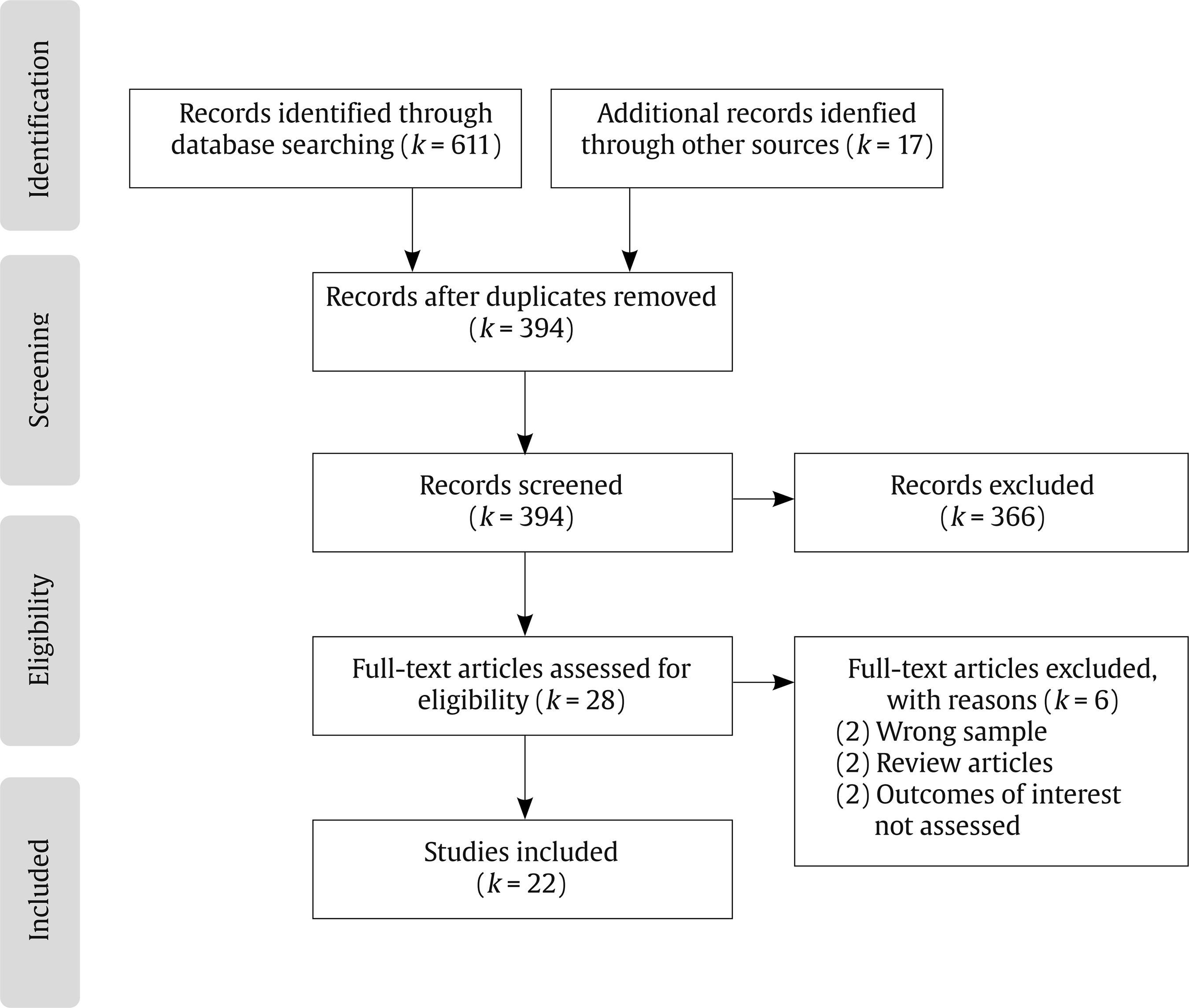
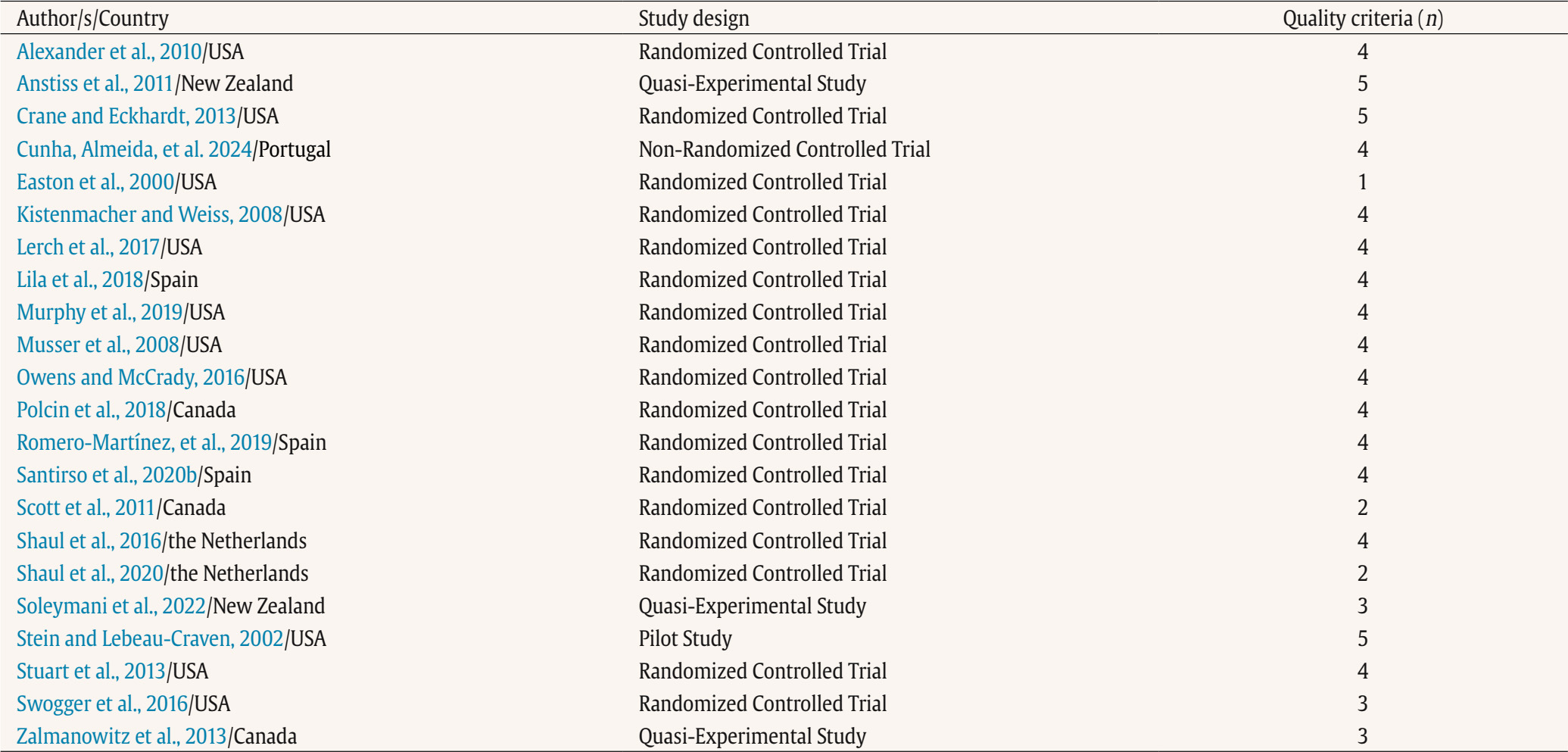
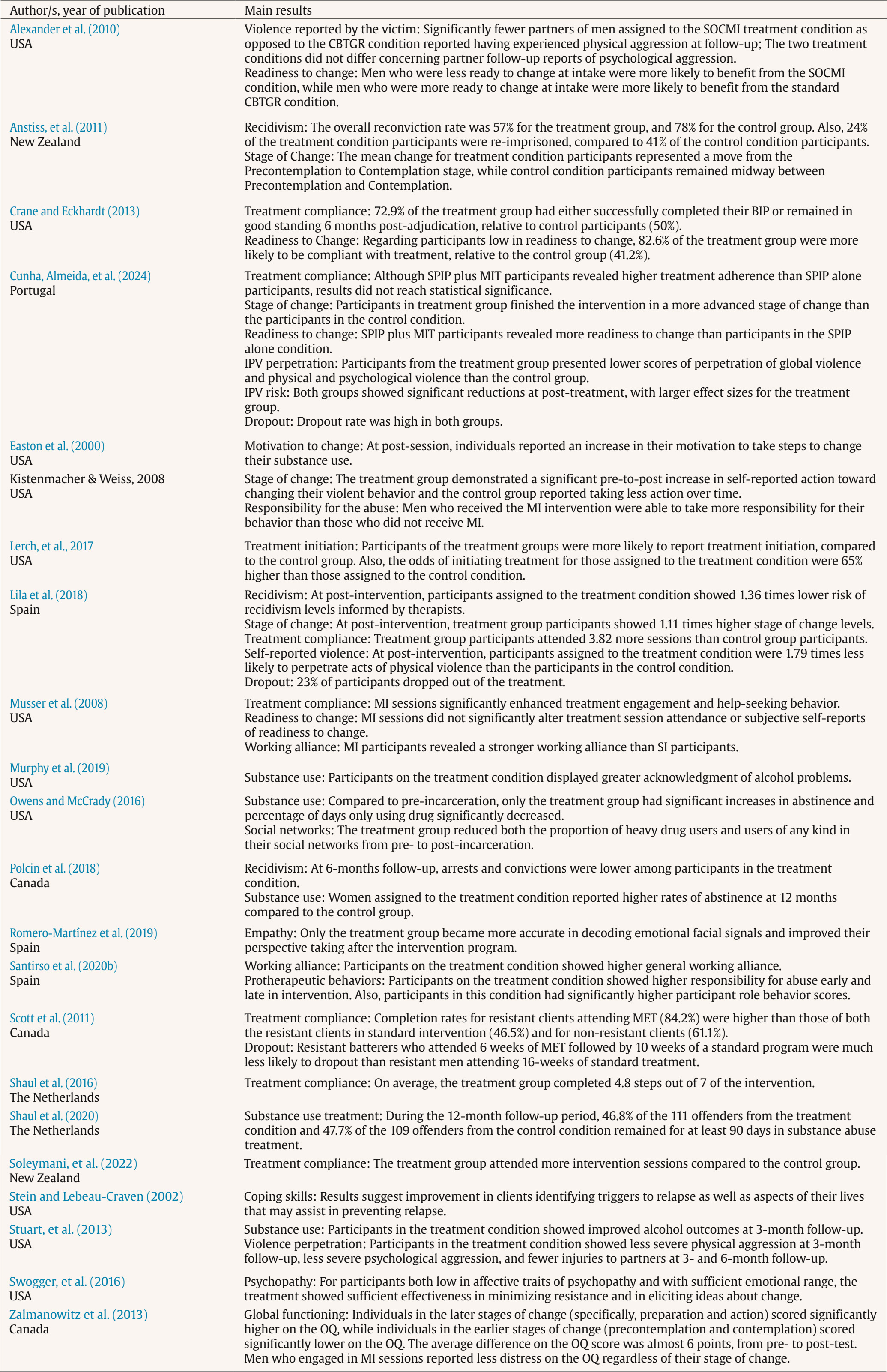
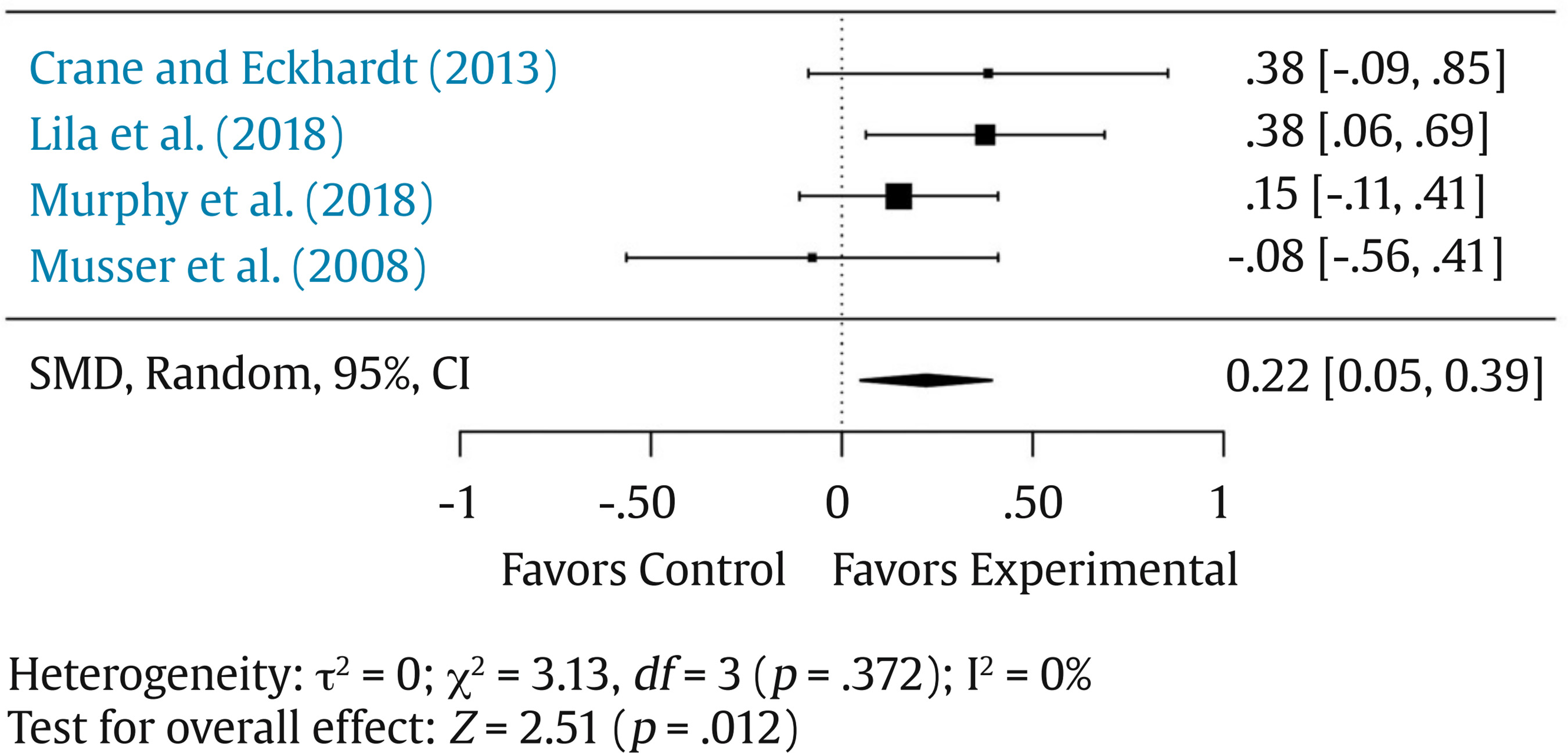
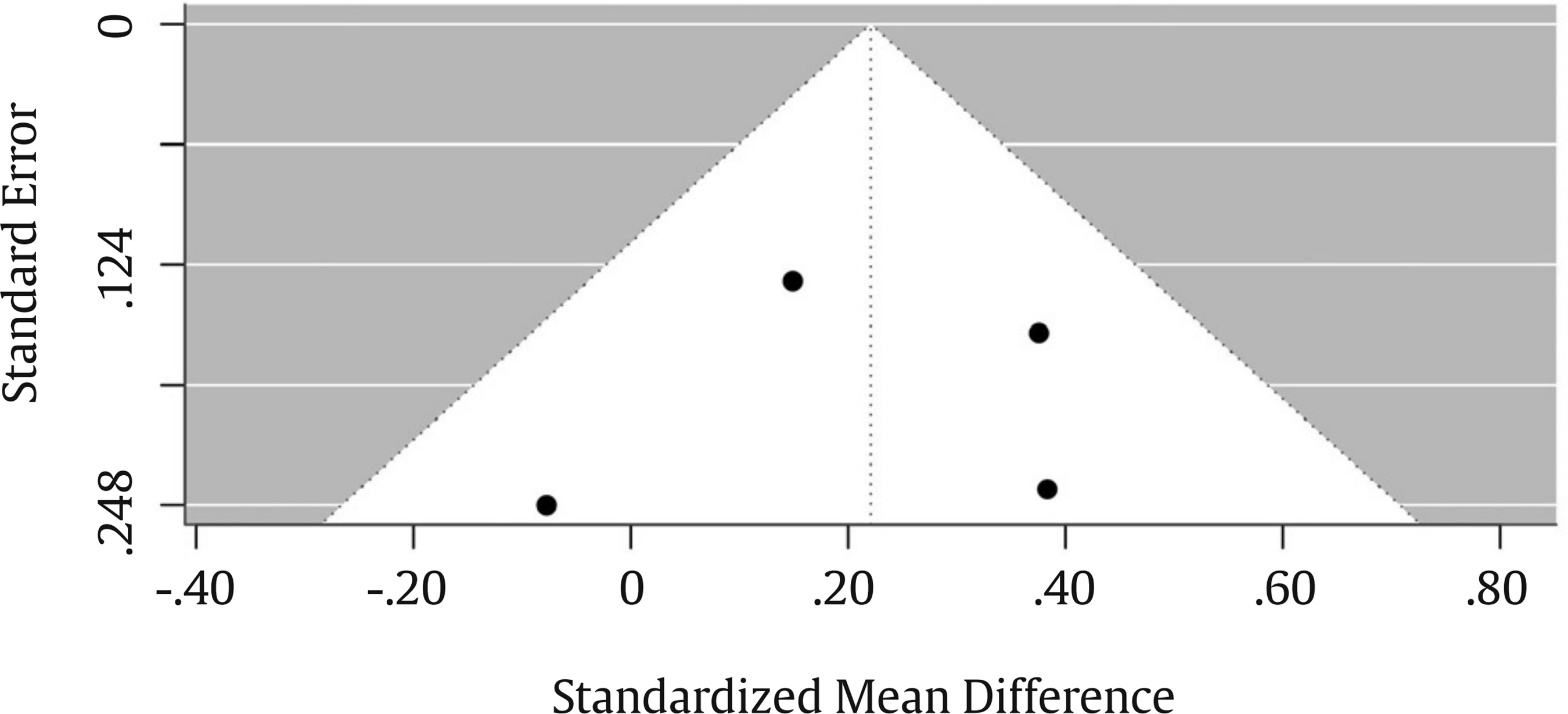
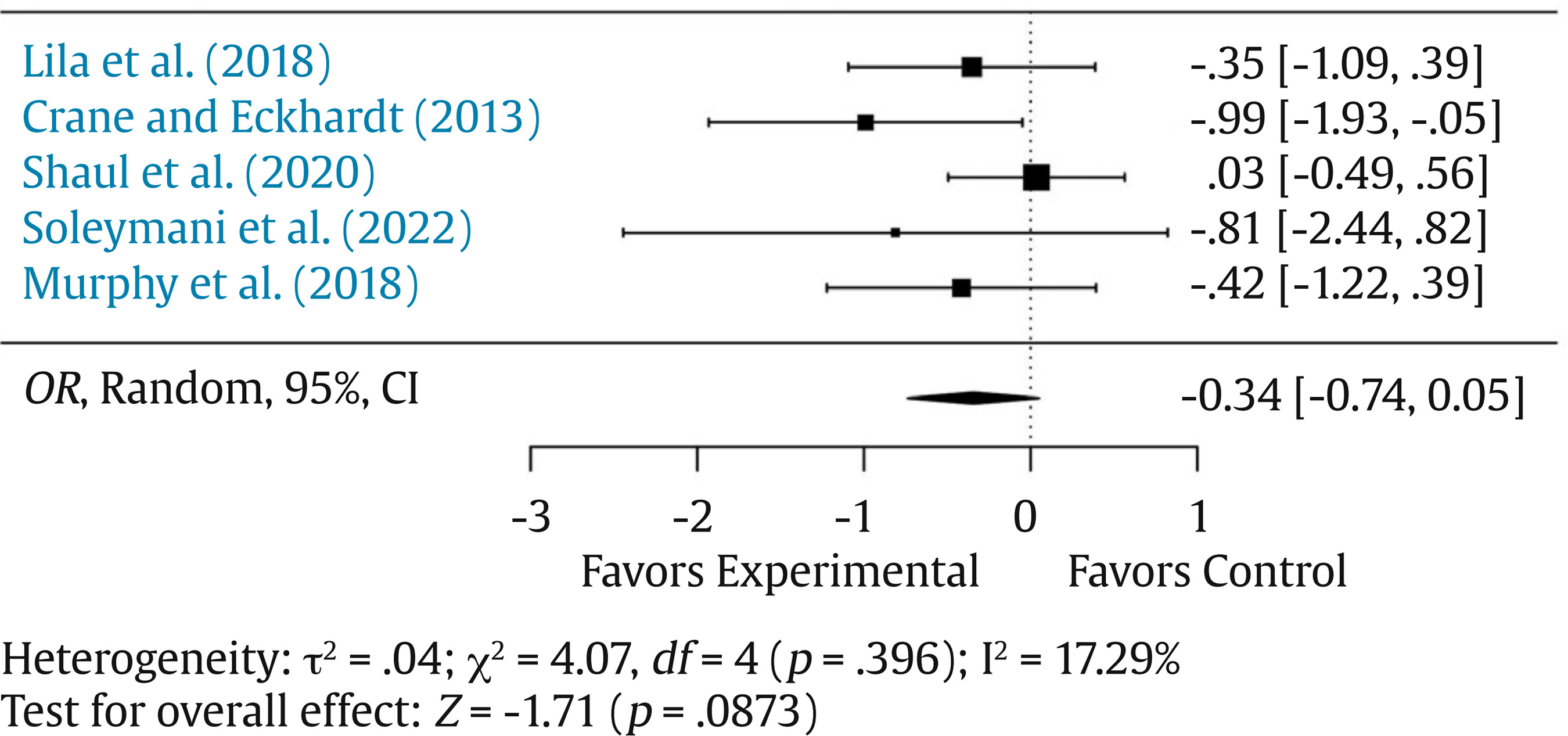
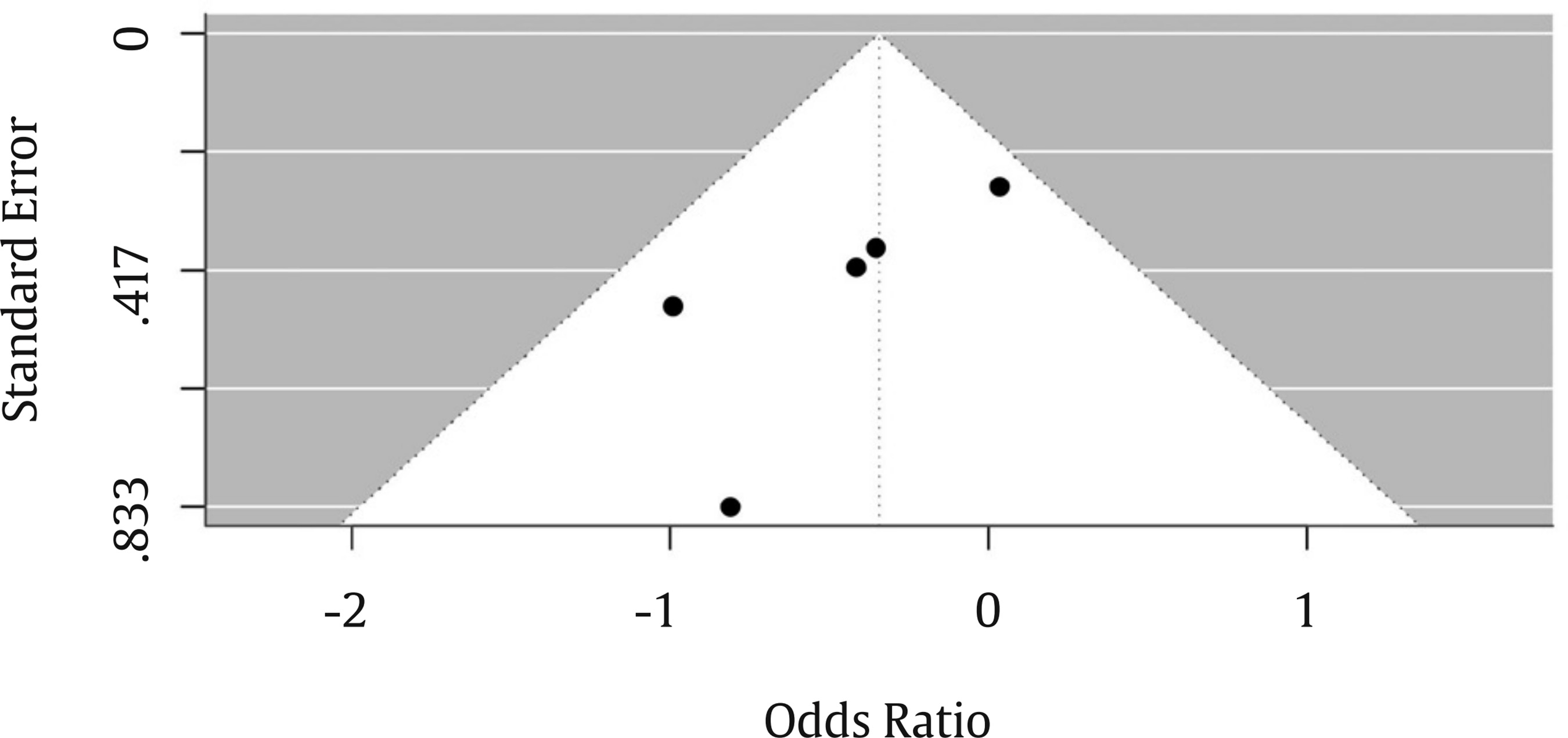
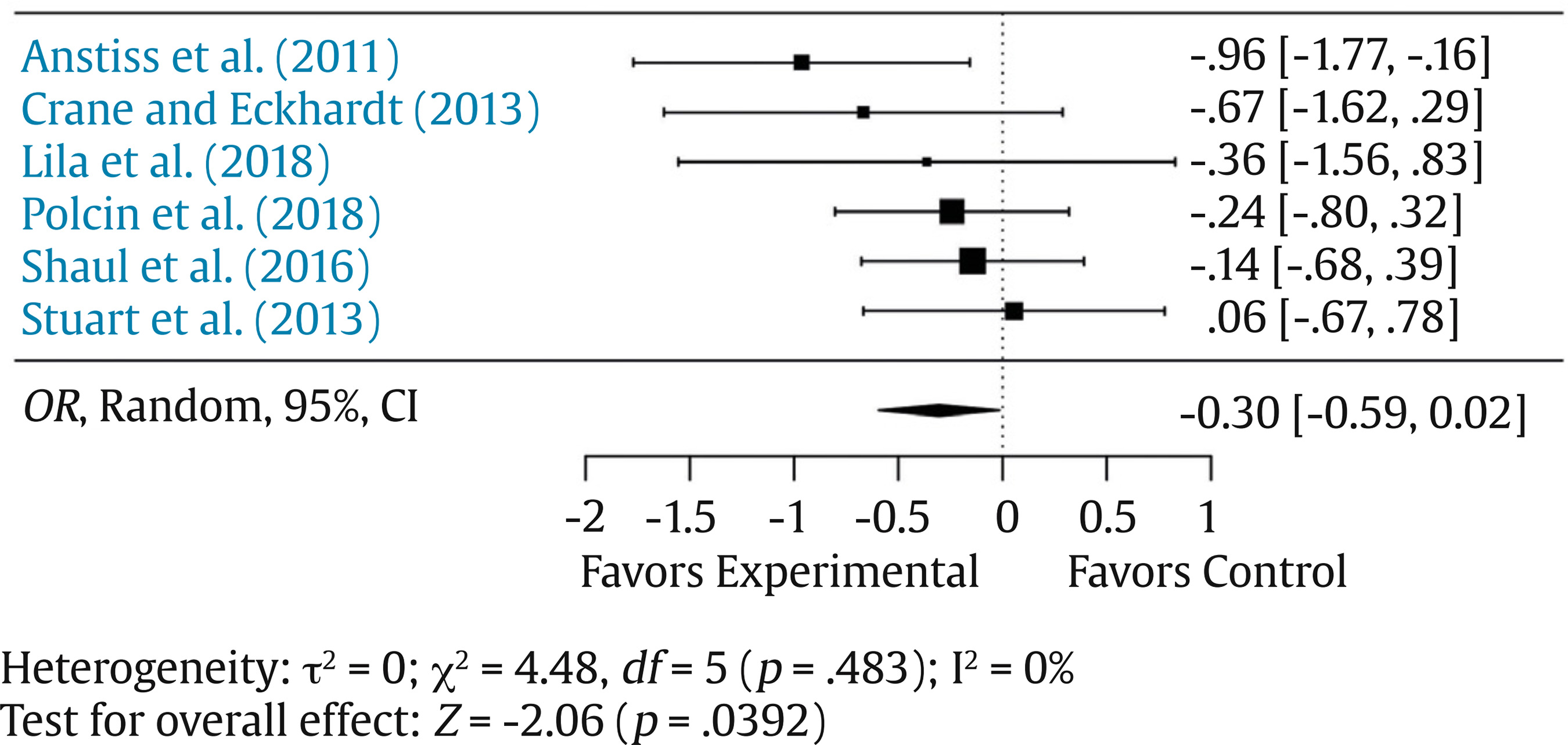
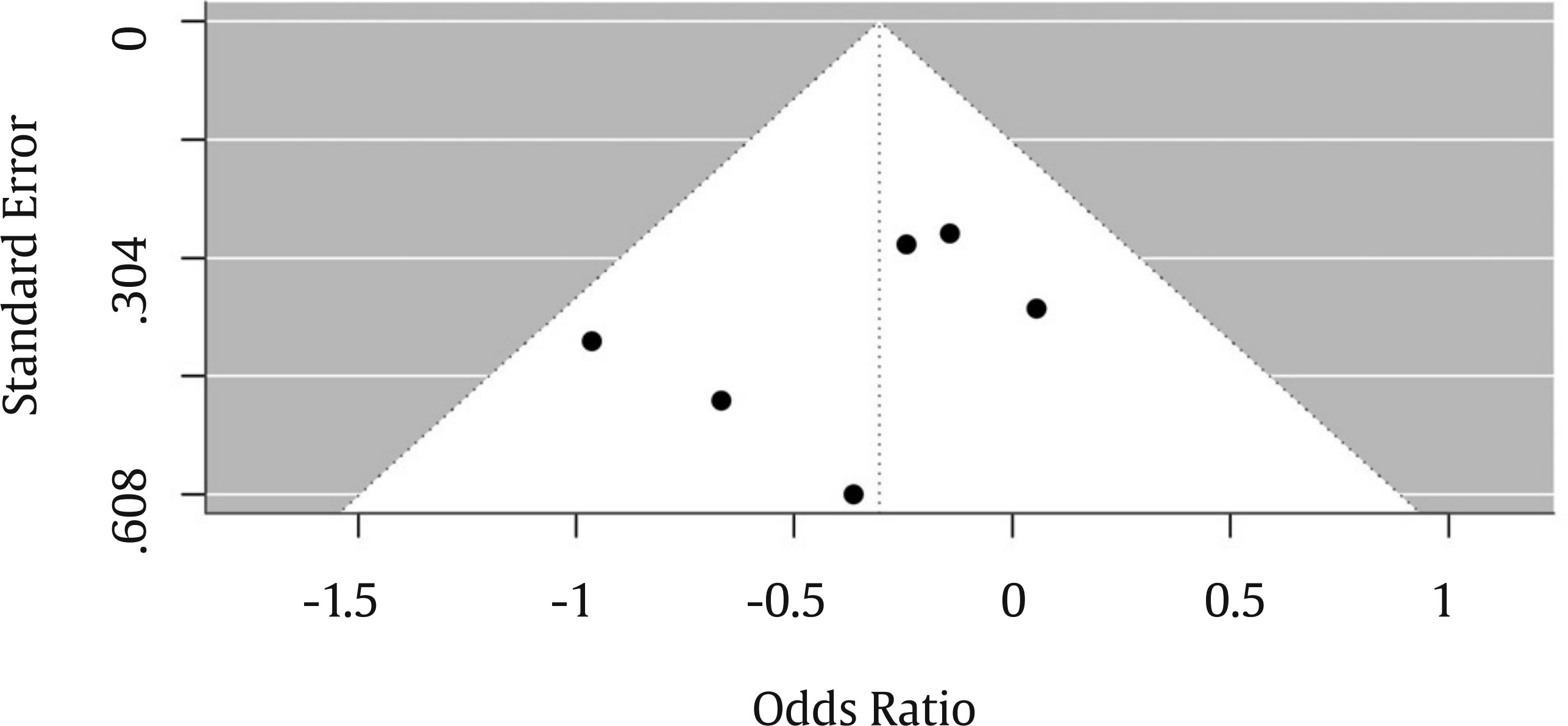








 e-PUB
e-PUB CrossRef
CrossRef JATS
JATS
